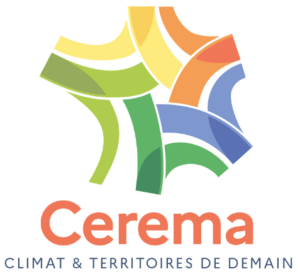Cerema

Presentation
As the leading public body for developing and capitalising on public expertise in planning, mobility, territorial cohesion and the ecological and energy transition, Cerema mobilises its skills to serve local authorities, scientific partners, consultancies and companies in the field of intelligent transport systems: autonomous and connected vehicles, serviced mobility, intelligent traffic control, etc.
https://www.cerema.fr Nouvelle fenêtreProjects / Use Cases
InDiD (2019-2023) is a project to develop and test a complete digital infrastructure for cooperative intelligent transport services. By deploying intelligence on the infrastructure, InDiD will improve its conditions of use. Coordinated by the French Ministry for Ecological Transition, it brings together 25 partners, including local authorities (the Grenoble Metropolitan Area, the City of Paris, the Aix-Marseille Metropolitan Area and the departments of Isère and Bouches-du-Rhône), road operators and their representatives (APRR, Vinci, Atlandes, SANEF and ASFA) and user companies (Valeo, Renault, PSA, TomTom). InDiD aims to continue deploying Cooperative Intelligent Transport Systems (C-ITS) at new road test sites in order to extend the coverage of services offered by the infrastructure. It must take into account new use cases, some of which involve the urban environment or the autonomous vehicle, deploy new technologies to best meet user needs and make transport systems more resilient. It is a logical continuation of the European SCOOP@F, C-ROADS France and InterCor projects that Cerema has participated in.
FENIX “A European FEderated Network of Information eXchange in Logistics” (2019-2022), is a project to develop and deploy a pilot digital information system for logistics transport along several European corridors. The project is coordinated by ERTICO and brings together 26 partners from 12 European countries, including 6 French partners. FENIX aims to deploy and test ITS services for freight and logistics on a dozen European multimodal trade and transport corridors, including two in France. 7 ITS services will be covered by use cases: estimating the time of arrival of goods, reducing greenhouse gas emissions, dematerialising documents for the transport of dangerous goods, planning multimodal routes, tracking and tracing vehicles and their loads, integrating multimodal traffic management and integrating transport in urban and suburban environments.
NAPCORE (2021-2024) : Coordinating European mobility data, NAPCORE (National Access Point Coordination Organisation for Europe)
The aim of this project is to coordinate and harmonise more than 30 mobility data platforms across Europe. EU requirements stipulate that each Member State must establish a National Access Point (NAP): a place where mobility data is published and made available for use (e.g. in travel information services). The project will run until the end of 2024, but the aim is to establish a sustainable, forward-looking platform organisation to make the NAPs the backbone of the digital infrastructure for intelligent transport systems (ITS). Cerema is acting as an expert on the Datex 2 language, a European standard for data exchange, and on transport data and MaaS – Mobility as a Service.
SAM – Safety and Acceptability of Autonomous Driving and Mobility (2019-2023): winner of the EVRA (Autonomous Road Vehicle Trials) call for projects aimed at supporting the development of automated mobility. This project brings together around 20 players from the automotive platform (PFA), including Cerema.
Cerema contributes its expertise in a number of areas, both technical and related to the services provided by these vehicles:
- development of the general evaluation methodology
- deployment and evaluation of cooperative systems
- collection of data relating to the physical infrastructure
- assessment of acceptability, user behaviour, environmental impact, mobility and traffic.
RD993 Lab (2019-2022): A call for innovative projects for the Boulevard Circulaire de la Défense
The Hauts-de-Seine department aims to facilitate and adapt vehicle traffic and improve the living environment around the circular boulevard, where 30,000 vehicles travel every day, by improving the landscaping, encouraging soft mobility, making signage clearer, reducing nuisance, etc. The RD993 Lab call for projects, co-constructed by Cerema and the department, was launched in March 2019, in partnership with Paris La Défense. Among the projects selected is Aximum’s ITS Ready project, which is part of the development of connected vehicles. Its aim is to equip road intersections so they can communicate with vehicles ( e.g. to indicate speed in order to pass through a green light). Colas is also testing Flowell illuminated road markings for dynamic lane allocation at complex intersections.
Standardisation – Cerema is also involved in the standardisation of Cooperative ITS both nationally and internationally. In particular, it is involved in CN16 – Cooperative Systems, as well as ISO TC 204 (WG16-Communications) and CEN/TC 278 (WG16 – Cooperative-ITS).
Find out more about the projects:
Timeline
European Congress on Intelligent Transport Systems in Toulouse from 30 May to 1 June 2022.
World Congress on Intelligent Transport Systems in Los Angeles from 18 to 22 September 2022
Transport Research Arena (TRA) in Lisbon from 14 to 17 November 2022
Generic contacts - services
Contact (Nota : générique) : mobilites@cerema.fr